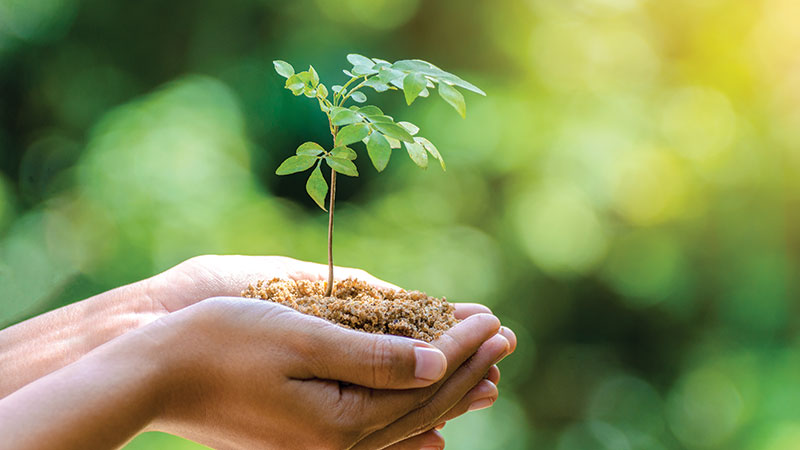By Katie Woychyshyn
There are a lot of misconceptions about the forestry industry floating around, like the misconception that harvesting trees is bad for the environment. The industry, however, is so much more than it seems to the uninformed eye. That is why educating the public is an important way to help those not in the industry understand what forestry truly is, why it’s important, and how it will play a large role in reaching carbon reduction goals.
On February 4, 2022, the Forest Products Association of Canada (FPAC) partnered with Natural Resources Canada (NRCAN) to release Capturing Carbon, a documentary exploring the role Canada’s forests will play in the world’s collective fight against climate change. The documentary launched at a virtual premiere hosted by Derek Nighbor, CEO of FPAC, who referred to the project as a labor of love.
Capturing Carbon tells the story of how sustainable forestry will help address the most pressing concern of our generation and help shape the greener future we deserve. It follows foresters from Tolko Industries, a forest management company headquartered in Vernon, BC, as they walk through a day in the field. As the documentary follows them through the forests they manage, the foresters talk about how they help the land through various stages of wildfire devastation, pest infestation, and forest regrowth. The documentary also explores how forests capture carbon polluting the environment, how the trees store the carbon within the wood we harvest, and how we can coordinate that wood into more sustainable practices of living, creating more climate-conscious communities.
The content in the documentary is an exciting effort to address forestry misunderstandings in the court of public opinion.
“Some of the misconceptions that people have is what’s very visual after we’ve harvested, whether it be a clear cut, or whether we’ve extracted a lot of timber off of there,” said` Jack Darney, RPF, Forest Superintendent at Tolko Industries, in the documentary. “It can look a little like a scar on that landscape. What people don’t understand, in general, is that they may not have seen that site prior to what’s just occurred there. It may have been a result of salvaging a wildfire, where there was 100% of the timber burnt.”
The warmer climate has created unprecedented challenges in the past few decades when it comes to wildfires. According to NRCAN, each year over the past 25 years, about 7,300 forest fires have occurred, burning a total of 2.5 million hectares of forests – and the climate is only going to continue getting hotter. This means that forests will continue to dry out, then easily begin to burn, releasing excessive amounts of carbon before starting the cycle again. The management of forests helps mitigate the devastation of these fires – both in terms of the environmental devastation and human impact.
Capturing Carbon stresses that forestry is so much more than harvesting and leaving the land bare: it’s about preventing and then salvaging forests after forest fires or managing pest infestations to create a better and healthier ecosystem.
The documentary is also about sustainable forestry, which FPAC’s Forestry for the Future defines as ensuring we (collectively) have a long-term plan to keep our forests healthy while recognizing and realizing the economic and environmental value of the world’s most renewable resource.
“At its heart, sustainable forest management is about relationships,” Paul Robitaille, Senior Director for Indigenous & Youth Relations at the Sustainable Forestry Initiative, said in the documentary. “It’s about collaboration, where diverse individuals can come together – who all love the forest and are passionate about the forest – and have the opportunity to contribute that passion, to have a plan that will work with nature.”
“Really, there’s three pillars of forestry: the economics, the social licence, and the environmental responsibility,” Jenna Swanson, RPF, Woodlands Operations Employee at Tolko industries said. “As a forester, all of us want to see the forest move forward in a healthy way for our families.”
According to Forestry for the Future, by 2030, Canada’s forest sector will remove 30 megatonnes of carbon dioxide from the atmosphere every year – representing more than 10% of Canada’s climate change mitigation target. This is the equivalent of taking over 9 million cars off the road. With Canada’s move to a net-zero carbon economy by 2050, every percentage counts.
“Our forests have a critical role to play in this fight,” Forestry for the Future states. “With over 40% of our country blanketed by the Boreal, Canada is home to not only the ultimate carbon sink but one of the world’s most renewable and sustainable resources. But how we manage them – and what we choose to create from this renewable resource – matters.”
Throughout history, Canada has retained over 90% of its original forest cover, and only uses less than 1% of harvestable forests per year. Additionally, the Canadian forestry industry replants between 400 and 600 million seedlings annually.
For more information, visit www.forestryforthefuture.ca or watch Capturing Carbon at www.forestryforthefuture.ca/doc.


 1-866-985-9780
1-866-985-9780